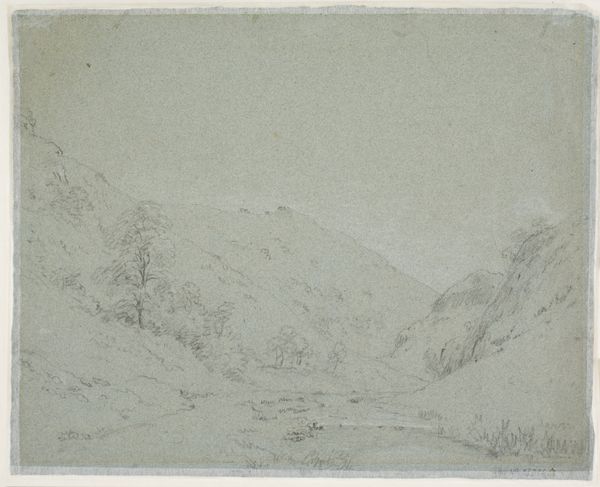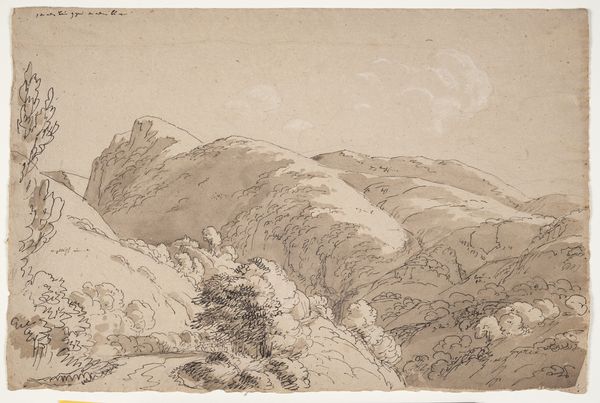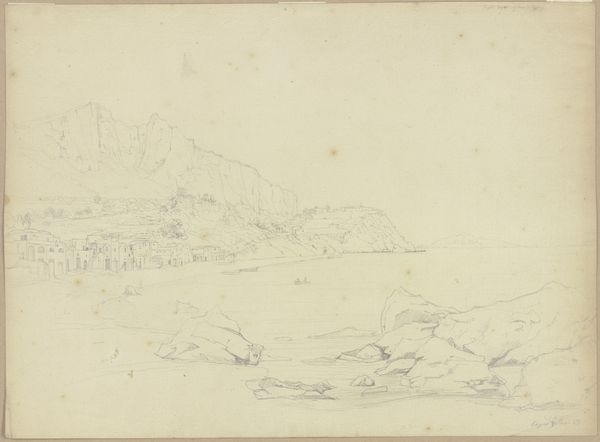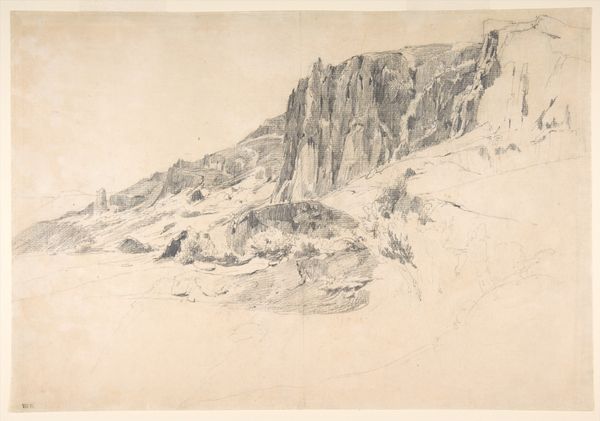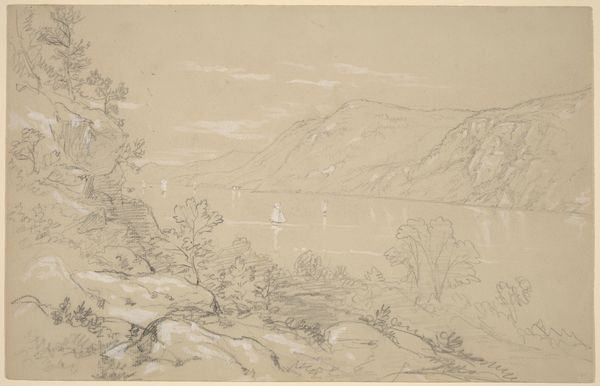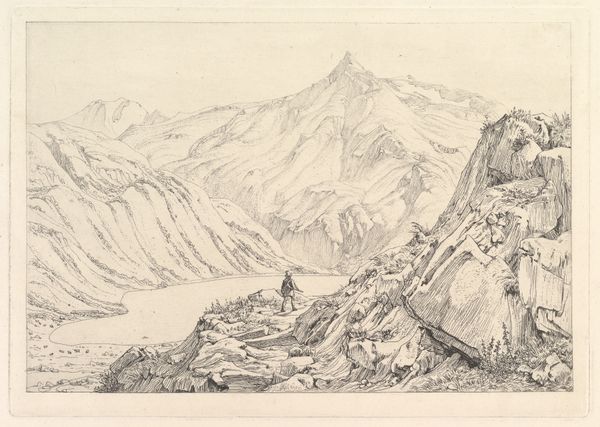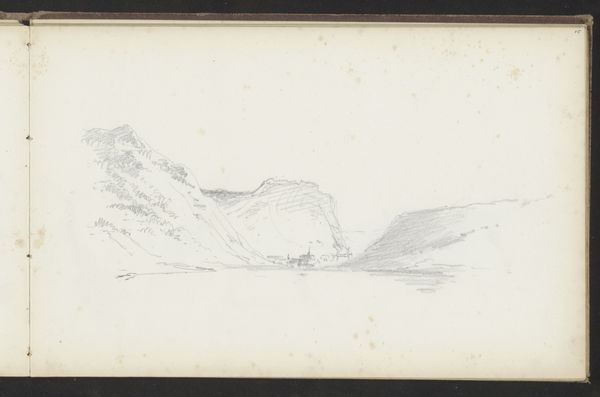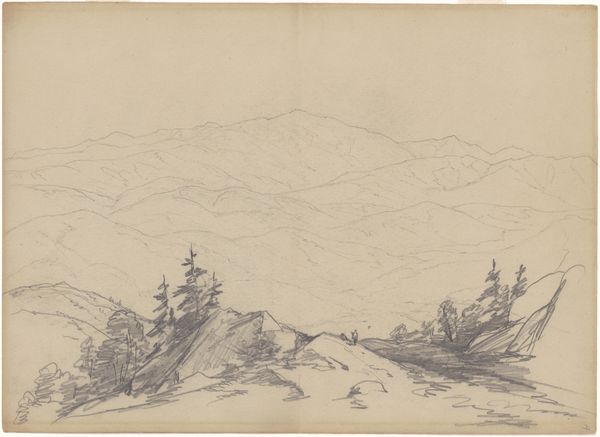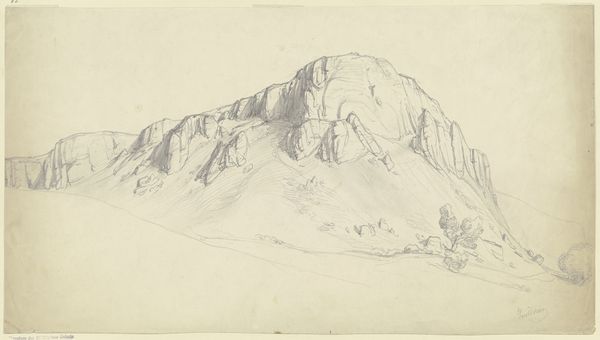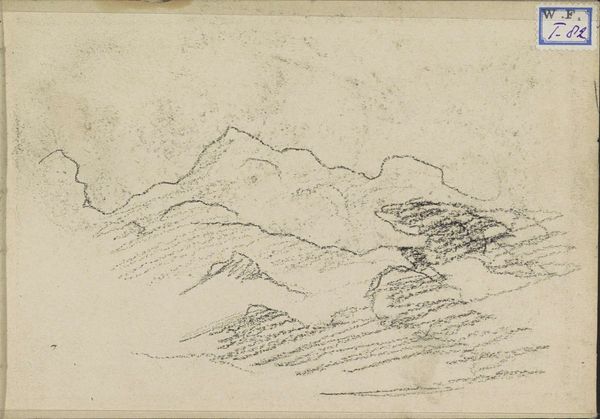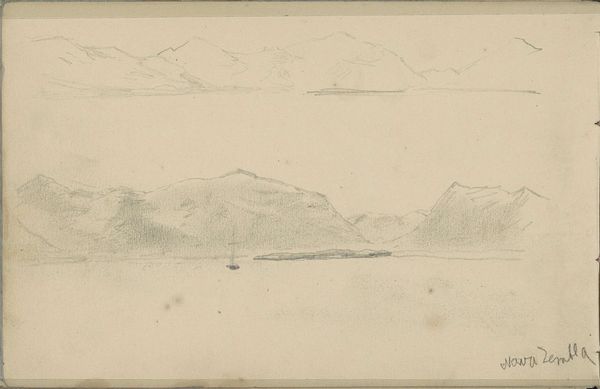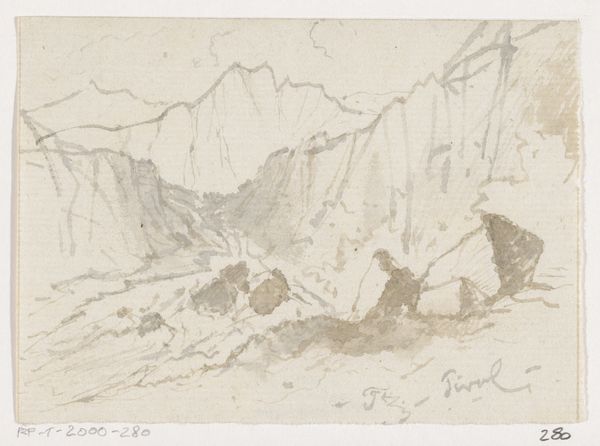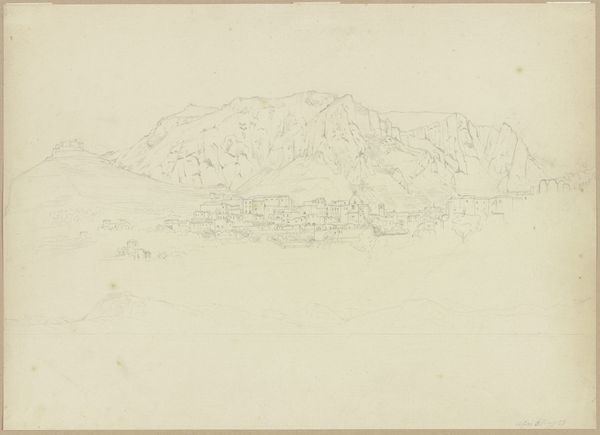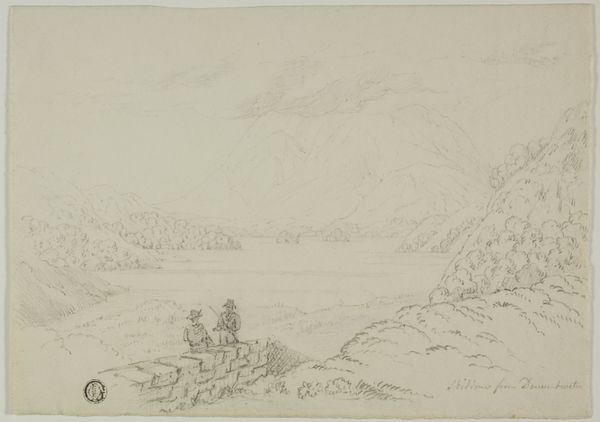
drawing, pencil
#
drawing
#
landscape
#
pencil
#
hudson-river-school
#
realism
Dimensions: sheet: 23.3 × 35.3 cm (9 3/16 × 13 7/8 in.)
Copyright: National Gallery of Art: CC0 1.0
Editor: So this pencil drawing is called *Hudson Highlands*, and it’s by John William Casilear, dating from around the 1860s. It feels very calm, almost serene. There's this soft focus to the scene. What do you see in this piece that goes beyond a simple landscape drawing? Curator: This image reverberates with echoes. Look at the deliberate composition—the mountain on the right dominates, but the river pulls our eye towards a distant, softer horizon. This echoes a familiar American theme: the tension between the immediate, almost overwhelming, natural world, and the promise of something more distant and perhaps attainable. The boats on the river, so small, speak to that tension as well; are they going *towards* the future, or *away* from the present? Editor: That's an interesting point about the boats. They're so tiny, they almost seem incidental. Is that a common symbol? Curator: Landscapes during this period were rarely just about pretty views; they were about the potential of America, both physical and spiritual. Think of light here: notice how light catches on the craggy mountain, drawing attention, almost inviting the eye, while on the left bank of the Hudson light fades away into something ethereal. These are choices. What do they evoke for *you*? Editor: Hmm, almost a contrast between the known and the unknown? It does make you wonder what the future holds for the figures traveling by the river! Curator: Exactly. This isn't just a landscape; it's an image pregnant with the *possibility* of meaning. We bring our own experiences to this and create our own dialogue across time. Editor: I see what you mean. It is less about what is shown, and more about what is implied, allowing one to look inward and reflect! Curator: Precisely. Symbols give substance to history!
Comments
No comments
Be the first to comment and join the conversation on the ultimate creative platform.
